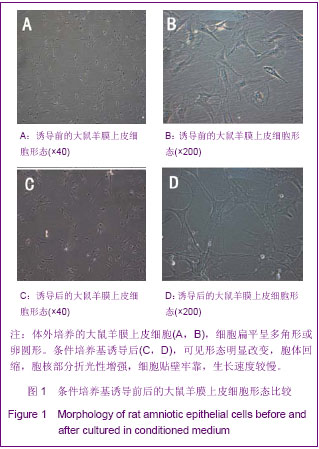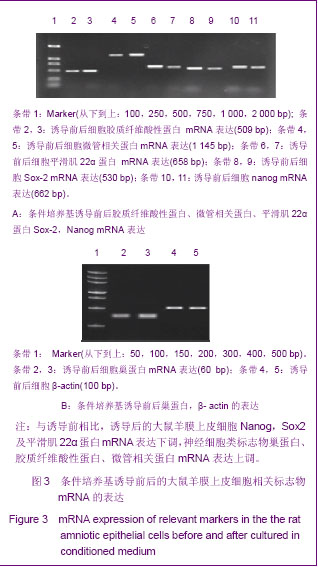中国组织工程研究 ›› 2013, Vol. 17 ›› Issue (19): 3503-3507.doi: 10.3969/j.issn.2095-4344.2013.19.013
• 干细胞培养与分化 stem cell culture and differentiation • 上一篇 下一篇
大鼠羊膜上皮细胞体外诱导可分化为类神经干细胞
郭 兵,许家军
- 解放军第二军医大学人体解剖学教研室,上海市 200433
Rat amniotic epithelial cells are induced to differentiate into neural-like stem cells in vitro
Guo Bing, Xu Jia-jun
- Department of Human Anatomy, Second Military Medical University of PLA, Shanghai 200433, China
摘要:
背景:以往研究发现修复神经损伤的细胞来源主要有许旺细胞、嗅鞘细胞、神经干细胞、激活的巨噬细胞等,但这些细胞存在着来源困难、有成瘤性、异体排斥等缺点。而羊膜上皮细胞不存在以上缺陷,且具有多向分化潜能,经诱导后可向心肌样细胞、神经干细胞、肝细胞、成骨和软骨细胞等分化。 目的:体外培养大鼠羊膜上皮细胞,并诱导其向类神经干细胞方向分化。 方法:取妊娠晚期大鼠,采用胰酶消化法获得羊膜上皮细胞,用无血清的神经干细胞条件培养基对细胞进行诱导分化,并用免疫细胞化学法和RT-PCR对诱导前后的细胞相关标志物进行鉴定。 结果与结论:形态学观察结果显示,条件培养基诱导后的羊膜上皮细胞胞体回缩,胞核部分折光性增强,出现类似于树突及轴突样结构,这些突起可交织成网状,细胞贴壁牢靠。免疫细胞化学检测结果显示,与诱导前相比,条件培养基诱导后的羊膜上皮细胞中巢蛋白、胶质纤维酸性蛋白荧光强度较强,而特异性胚胎抗原4、波形蛋白荧光强度较弱。RT-PCR检测显示,与诱导前相比,条件培养基诱导后的羊膜上皮细胞的巢蛋白、胶质纤维酸性蛋白、微管相关蛋白mRNA的表达增强,而平滑肌22α、Sox-2及Nanog mRNA的表达减弱。说明体外诱导的大鼠羊膜上皮细胞可成功分化为类神经干细胞。
中图分类号:



.jpg)
.jpg)